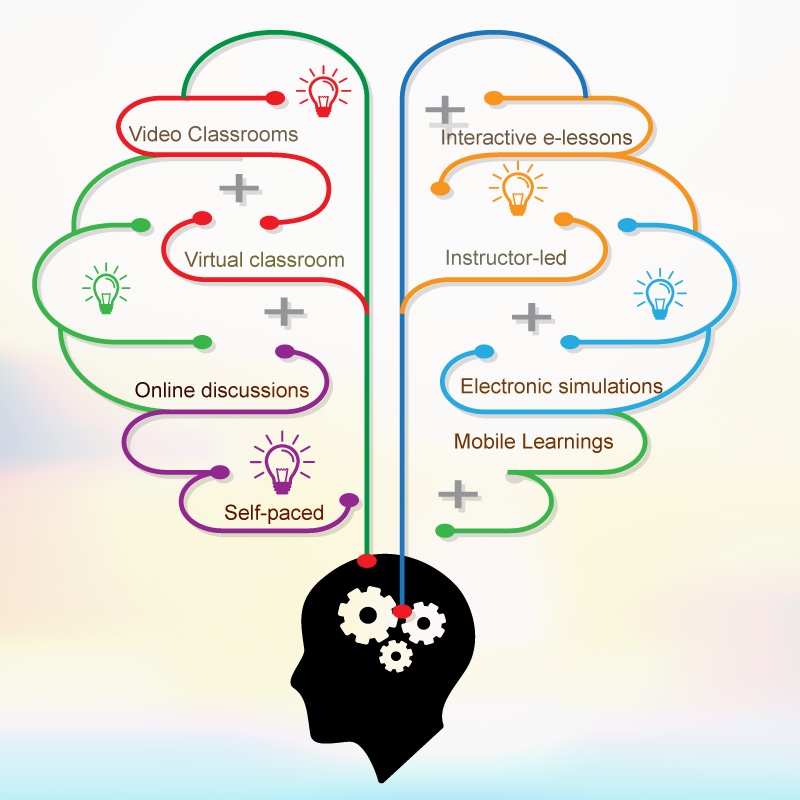eLearning Techniques Successful Enterprises Should Adopt
Developing functional, valuable eLearning courses can be a challenge, particularly in a large enterprise. Maintaining learner engagement and motivation, appealing to a large audience that spans different departments and functions, and successfully transferring knowledge that can be applied on the job are all necessary to a positive eLearning experience, but can be difficult to achieve. But the benefits of eLearning techniques for enterprises are substantial. A good eLearning program can increase employee engagement by up to 18%, improve employee engagement, and reduce turnover. An excellent eLearning program can also become a foundational element of company branding and an employee benefit that helps attract and retain top talent.
An unsuccessful eLearning program, on the other hand, can drain the resources of your business. You can sink time, money, and expertise into creating and distributing online courses that don’t engage employees or provide the information they need to improve their job performance.
To create a successful eLearning program, you need to build in eLearning techniques that not only engage your employees and contractors but also help them learn and retain knowledge. Large enterprises also need techniques that are adaptable for different departments and can be used with a large, geographically-dispersed learner base.
Below are 6 proven eLearning techniques that fit the bill:
1. Blended Learning
Blended learning combines the best of traditional training with online education, providing a comprehensive experience for employees. A portion of the course is delivered as eLearning, while the rest is delivered in real time, either in a classroom or via distance learning portal through a live webinar or any other live, online class.
Blended learning allows employees and contractors to work through beginner and intermediate information and skills via eLearning, moving at their own pace, and then join the face-to-face program for higher-level, practical, or complex experiences. Blended learning is particularly effective in large organizations, with the eLearning segment providing the necessary flexibility and scalability, while classroom learning (in person or through a portal) allows for greater complexity of content and on-the-job application.
2. Interactivity
Interactivity in eLearning represents the exchange between learners and eLearning software, such as a Learning Management System (LMS). By building in interactivity, the LMS isn’t just used for delivering information, but also for actively engaging learners by requiring them to become active participants rather than passive recipients of content.
Potential interactive elements that can be introduced to eLearning include:
- Scenario and situation activities
Explain a scenario with a core problem your business needs to solve, then ask the learner to respond to the issue with potential resolutions via email or freeform text box in a quiz. - Stories and games
Have learners interact with stories and games by answering questions, completing tasks, or otherwise interacting with the eLearning content. - Quizzes and assessments
- Ask learners to respond and reiterate key concepts, providing them with scores to track their progress and provide scores to motivate improvement.
Simulation can also be applied as an interactive training element, allowing an employee to learn how to operate expensive or complex systems or machinery in a safe environment.
3. Microlearning
Microlearning is the strategy of delivering content in small, easy-to-process units of 5-10 minutes, rather than bundling an entire course that can take several hours to complete.
Microlearning allows learners to achieve a single learning objective at a time, mastering each step individually before moving on to the next. It can be delivered on an anytime, anywhere basis, at the student’s convenience, and on their preferred device.
This technique can be used to deliver standalone programs or can be incorporated as a feature to support a larger course, anywhere in the training cycle. A recent study found that microlearning can be developed more quickly and easily than larger eLearning modules, cutting costs by up to 50%. Moreover, it improves knowledge retention by 20% and increases learner engagement by 50%.
4. Video
Video is already a recognized component of effective eLearning, providing a familiar and entertaining method of transferring information to learners. It is a method preferred by employees, who are 75% more likely to watch a video than reading the text, and the use of video boosts engagement while increasing information retention. In fact, video in eLearning can boost retention by 83% over time.
There are several ways to build video into your training program. Video can be used as microlearning—with information ‘chunked’ and represented in a short, 30-second video to reinforce a microlearning segment. It can also be used as part of an interactive element, like a quiz, presenting a story in video form and then asking questions about the content.
Or video can be incorporated in a new way—having learners write their own script and make their own video using an app—to reinforce concepts and gauge understanding and retention of materials.
5. Social Learning And Gamification
Incorporating the informal peer-to-peer sharing concepts of social learning to your eLearning content can help a company to improve learner motivation and engagement. Combined with elements of gamification—rewards, scores, badges, and certificates—as well as competition between individuals, teams, and departments, learner engagement and motivation can be improved.
Social learning can be incredibly beneficial for large enterprises because it’s more scalable that face-to-face interaction. Instead of having learners meet in person for discussions or questions that take up time and remove employees from their regular duties, eLearning techniques allow employees to connect in bite-sized chunks, asking questions online and coming back to the responses later.
Social learning tools might include online learning communities that are linked to different courses, departments, or topics, as well as live chat and email options. Gamification tools often include quizzes, course completion records, and leaderboards that create an atmosphere of friendly competition.
6. Incentives
Rewards such as badges, certificates and competitive rankings (all elements of gamification) can be excellent motivators; but real-life incentives can motivate your employees as well. These could include financial incentives, such as a bonus or gift cards for successful course completion; or non-financial rewards such as a work from home day or flex time, or a shout-out on the corporate messaging system or newsletter.
Build incentives into your employee training programs, as well as building training programs into your company’s internal career pathing. If employees know that they have a better chance of promotion if they complete a certain amount of elective courses, they’re much more likely to engage and take the initiative to upskill themselves.
Effective eLearning Techniques Can Improve Business KPIs
Investing in your employees by providing training is a critical component of organizational success, improving employee productivity, retention, and overall organizational revenues. Making the most of your eLearning software can help your company to achieve success; the effort that you put into maximizing eLearning techniques to appeal to learners will pay off in the long run.








